An Improved Analysis Method for Organic Rankine Cycles Based on Radial-Inflow Turbine Efficiency Prediction
Abstract
:1. Introduction
2. Materials and Methods
2.1. Thermodynamic Model
2.2. Economic Model
2.3. Radial-Inflow Turbine Efficiency Prediction Model
2.4. Multi-Objective Optimization Model
3. Results and Discussion
3.1. Comparison of the ORCCTE System and ORCDTE System
3.2. Sensitivity Analysis and Comparison of the ORCCTE System and the ORCDTE System
4. Conclusions
- (1)
- Turbine efficiency is not constant, it decreases with the increasing evaporation temperature, and increases with the increasing condensation temperature. For radial-inflow turbine with organic working fluid benzene, the largest difference between the predicted turbine efficiency and the constant turbine efficiency is 0.157 for the given operating conditions.
- (2)
- The distribution of the Pareto frontier for the ORCCTE system and the ORCDTE system are different. Compared with the ORCCTE system, the ORCDTE system has a lower optimal evaporation temperature but a slightly higher optimal condensation temperature.
- (3)
- As the heat source temperature increases, the deviation between the predicted turbine efficiency and constant turbine efficiency increases, and the error in the theoretical analysis results caused by assuming a constant turbine efficiency in ORC system increases. Meanwhile, with the increasing ambient temperature, the deviation between the predicted turbine efficiency and the constant turbine efficiency decreases, and the error in the theoretical analysis results caused by assuming a constant turbine efficiency decrease.
Author Contributions
Funding
Conflicts of Interest
Nomenclature
| c | absolute velocity, m s−1 |
| C | capital cost, $ |
| D | diameter, m |
| ratio of wheel diameter | |
| f | coefficient for friction loss |
| h | specific enthalpy, kJ kg−1 |
| l | blade height, m |
| m | mass flow rate, kg s−1 |
| P | pressure, MPa |
| Q | heat transfer rate, kW |
| T | Temperature, K |
| U | peripheral velocity, m s−1 |
| v | specific volume, m3 kg−1 |
| w | relative velocity, m s−1 |
| W | power, kW |
Greek Letters
| η | efficiency |
| velocity ratio | |
| ξ | loss coefficient |
| φ | stator blade velocity coefficient |
| ψ | rotor blade velocity coefficient |
| α | absolute flow angle |
| β | relative flow angle |
| Ω | degree of reaction |
| Δh | entropy drop, kJ kg−1 |
| ΔTp | pinch point temperature difference, K |
| δ | tip clearance, m |
Subscripts
| 0, 1, 2, 2s, 4, 5s, 5 | state points |
| BM | bare module |
| con | condenser |
| critical | critical |
| eva | evaporator |
| f | working fluid |
| g1 | flue gas inlet |
| max | maximum |
| min | minimum |
| net | net |
| opt | optimal |
| pump | pump |
| s | isentropic |
| tur | turbine |
| the | thermal |
| u | peripheral |
References
- Mahmoudi, A.; Fazli, M.; Morad, M.R. A recent review of waste heat recovery by Organic Rankine Cycle. Appl. Therm. Eng. 2018, 143, 660–675. [Google Scholar] [CrossRef]
- Fu, H.; Li, Z.; Liu, Z.; Wang, Z. Research on big data digging of hot topics about recycled water use on micro-blog based on particle swarm optimization. Sustainability 2018, 10, 2488. [Google Scholar] [CrossRef]
- Li, P.; Han, Z.; Jia, X.; Mei, Z.; Han, X.; Wang, Z. Analysis and comparison on thermodynamic and economic performances of an organic Rankine cycle with constant and one-dimensional dynamic turbine efficiency. Energy Convers. Manag. 2019, 180, 665–679. [Google Scholar] [CrossRef]
- Song, J.; Feng, Q.; Wang, X.; Fu, H.; Jiang, W.; Chen, B. Spatial Association and Effect Evaluation of CO2 Emission in the Chengdu-Chongqing Urban Agglomeration: Quantitative Evidence from Social Network Analysis. Sustainability 2019, 11, 1. [Google Scholar] [CrossRef]
- Chen, L.X.; Hu, P.; Zhao, P.P.; Xie, M.N.; Wang, F.X. Thermodynamic analysis of a High Temperature Pumped Thermal Electricity Storage (HT-PTES) integrated with a parallel organic Rankine cycle (ORC). Energy Convers. Manag. 2018, 177, 150–160. [Google Scholar] [CrossRef]
- Mahmoudzadeh Andwari, A.; Pesiridis, A.; Karvountzis-Kontakiotis, A.; Esfahanian, V. Hybrid electric vehicle performance with organic Rankine cycle waste heat recovery system. Appl. Sci. 2017, 7, 437. [Google Scholar] [CrossRef]
- Landelle, A.; Tauveron, N.; Haberschill, P.; Revellin, R.; Colasson, S. Organic Rankine cycle design and performance comparison based on experimental database. Appl. Energy 2017, 204, 1172–1187. [Google Scholar] [CrossRef]
- Feng, Y.; Zhang, Y.; Li, B.; Yang, J.; Shi, Y. Comparison between regenerative organic Rankine cycle (RORC) and basic organic Rankine cycle (BORC) based on thermoeconomic multi-objective optimization considering exergy efficiency and levelized energy cost (LEC). Energy Convers. Manag. 2015, 96, 58–71. [Google Scholar] [CrossRef]
- Da Lio, L.; Manente, G.; Lazzaretto, A. A mean-line model to predict the design efficiency of radial inflow turbines in organic Rankine cycle (ORC) systems. Appl. Energy 2017, 205, 187–209. [Google Scholar] [CrossRef]
- Uusitalo, A.; Honkatukia, J.; Turunen-Saaresti, T.; Grönman, A. Thermodynamic evaluation on the effect of working fluid type and fluids critical properties on design and performance of Organic Rankine Cycles. J. Clean. Prod. 2018, 188, 253–263. [Google Scholar] [CrossRef]
- Özahi, E.; Tozlu, A.; Abuşoğlu, A. Thermoeconomic multi-objective optimization of an organic Rankine cycle (ORC) adapted to an existing solid waste power plant. Energy Convers. Manag. 2018, 168, 308–319. [Google Scholar] [CrossRef]
- Yang, F.; Zhang, H.; Song, S.; Bei, C.; Wang, H. Thermoeconomic multi-objective optimization of an organic Rankine cycle for exhaust waste heat recovery of a diesel engine. Energy 2015, 93, 2208–2228. [Google Scholar] [CrossRef]
- Yi, Z.; Luo, X.; Yang, Z.; Wang, C.; Chen, J.; Chen, Y.; Ponce-Ortega, J.M. Thermo-economic-environmental optimization of a liquid separation condensation-based organic Rankine cycle driven by waste heat. J. Clean. Prod. 2018, 184, 198–210. [Google Scholar] [CrossRef]
- Behzadi, A.; Gholamian, E.; Houshfar, E.; Habibollahzade, A. Multi-objective optimization and exergoeconomic analysis of waste heat recovery from Tehran’s waste-to-energy plant integrated with an ORC unit. Energy 2018, 160, 1055–1068. [Google Scholar] [CrossRef]
- Gimelli, A.; Luongo, A.; Muccillo, M. Efficiency and cost optimization of a regenerative Organic Rankine Cycle power plant through the multi-objective approach. Appl. Therm. Eng. 2017, 114, 601–610. [Google Scholar] [CrossRef]
- Li, P.; Han, Z.; Jia, X.; Mei, Z.; Han, X. Analysis of the Effects of Blade Installation Angle and Blade Number on Radial-Inflow Turbine Stator Flow Performance. Energies 2018, 11, 2258. [Google Scholar] [CrossRef]
- Han, Z.; Fan, W.; Zhao, R. Improved thermodynamic design of organic radial-inflow turbine and ORC system thermal performance analysis. Energy Convers. Manag. 2017, 150, 259–268. [Google Scholar] [CrossRef]
- Alshammari, F.; Karvountzis-Kontakiotis, A.; Pesiridis, A.; Giannakakis, P. Off-design performance prediction of radial turbines operating with ideal and real working fluids. Energy Convers. Manag. 2018, 171, 1430–1439. [Google Scholar] [CrossRef]
- Rahbar, K.; Mahmoud, S.; Al-Dadah, R.K.; Moazami, N. Modelling and optimization of organic Rankine cycle based on a small-scale radial inflow turbine. Energy Convers. Manag. 2015, 91, 186–198. [Google Scholar] [CrossRef]
- Bahadormanesh, N.; Rahat, S.; Yarali, M. Constrained multi-objective optimization of radial expanders in organic Rankine cycles by firefly algorithm. Energy Convers. Manag. 2017, 148, 1179–1193. [Google Scholar] [CrossRef]
- Dong, B.; Xu, G.; Li, T.; Luo, X.; Quan, Y. Parametric analysis of organic rankine cycle based on a radial turbine for low-grade waste heat recovery. Appl. Therm. Eng. 2017, 126, 470–479. [Google Scholar] [CrossRef]
- Xiao, L.; Wu, S.Y.; Yi, T.T.; Liu, C.; Li, Y.R. Multi-objective optimization of evaporation and condensation temperatures for subcritical organic Rankine cycle. Energy 2015, 83, 723–733. [Google Scholar] [CrossRef]
- Fiaschi, D.; Manfrida, G.; Maraschiello, F. Thermo-fluid dynamics preliminary design of turbo-expanders for ORC cycles. Appl. Energy 2012, 97, 601–608. [Google Scholar] [CrossRef]
- Lee, Y.; Lu, G. Radial Inflow Turbine and Centrifugal Compressor; China Machine Press: Beijing, China, 1984. [Google Scholar]
- Jones, A.C. Design and Test of a Small, High Pressure Ratio Radial Turbine. J. Turbomach. 1996, 118, 362–370. [Google Scholar] [CrossRef]
- Jangir, P.; Jangir, N. A new Non-Dominated Sorting Grey Wolf Optimizer (NS-GWO) algorithm: Development and application to solve engineering designs and economic constrained emission dispatch problem with integration of wind power. Eng. Appl. Artif. Intell. 2018, 72, 449–467. [Google Scholar] [CrossRef]
- Kang, L.; Du, H.L.; Zhang, H.; Ma, W.L. Systematic research on the application of steel slag resources under the background of big data. Complexity 2018, 2018, 6703908. [Google Scholar] [CrossRef]
- Yang, A.M.; Yang, X.L.; Chang, J.C.; Bai, B.; Kong, F.B.; Ran, Q.B. Research on a fusion scheme of cellular network and wireless sensor networks for cyber physical social systems. IEEE Access 2018, 6, 18786–18794. [Google Scholar] [CrossRef]
- Lu, C.; Xiao, S.; Li, X.; Gao, L. An effective multi-objective discrete grey wolf optimizer for a real-world scheduling problem in welding production. Adv. Eng. Softw. 2016, 99, 161–176. [Google Scholar] [CrossRef]
- Wu, K.; Du, K.; Hu, G. A novel design concept for fabricating 3D graphene with the assistant of anti-solvent precipitated sulphates and its Li-ion storage properties. J. Mater. Chem. A 2018, 6, 3444–3453. [Google Scholar] [CrossRef]
- Imran, M.; Usman, M.; Park, B.S.; Kim, H.J.; Lee, D.H. Multi-objective optimization of evaporator of organic Rankine cycle (ORC) for low temperature geothermal heat source. Appl. Therm. Eng. 2015, 80, 1–9. [Google Scholar] [CrossRef]
- Feng, Y.; Zhang, Y.; Li, B.; Yang, J.; Shi, Y. Sensitivity analysis and thermoeconomic comparison of ORCs (organic Rankine cycles) for low temperature waste heat recovery. Energy 2015, 82, 664–677. [Google Scholar] [CrossRef]
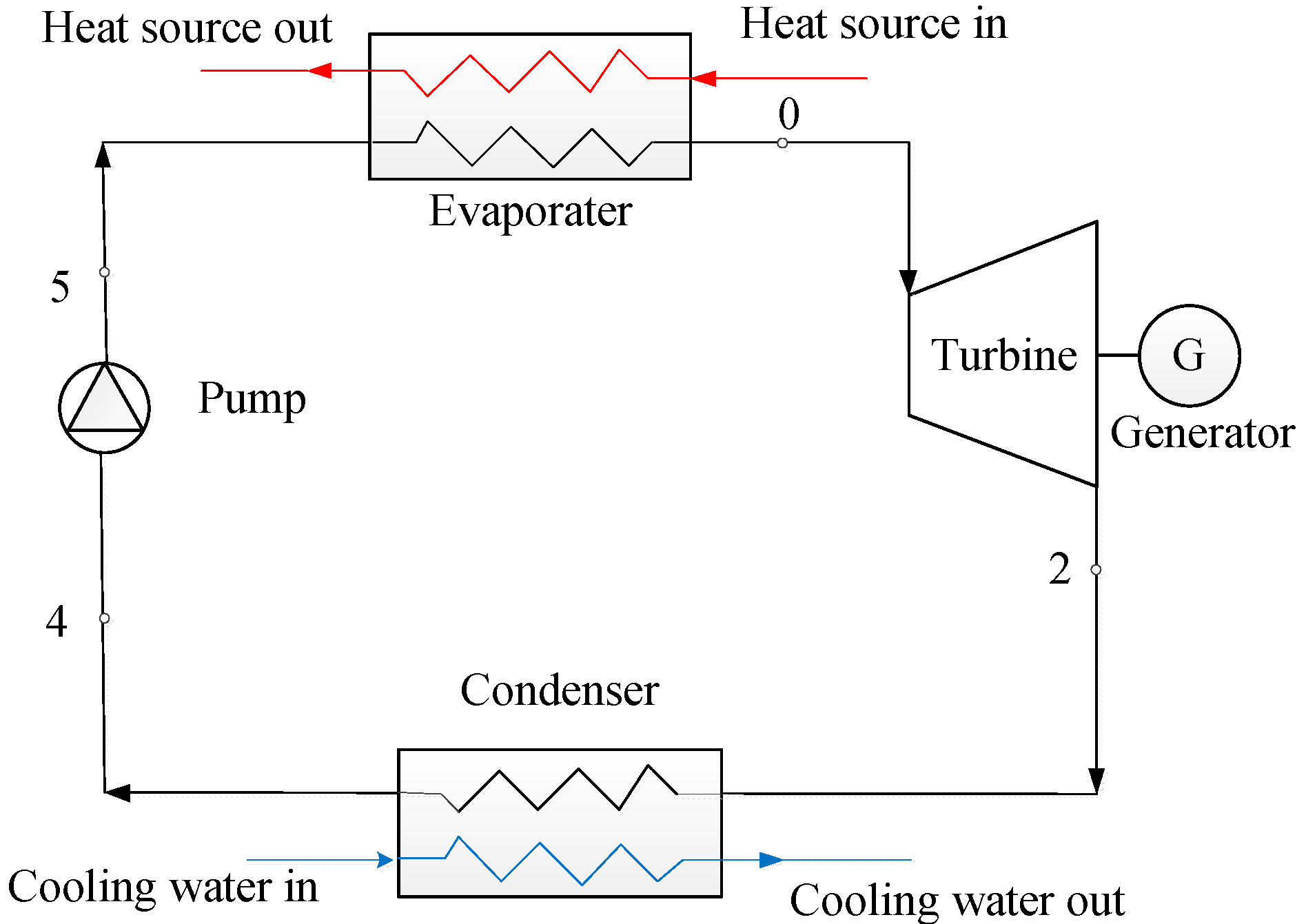
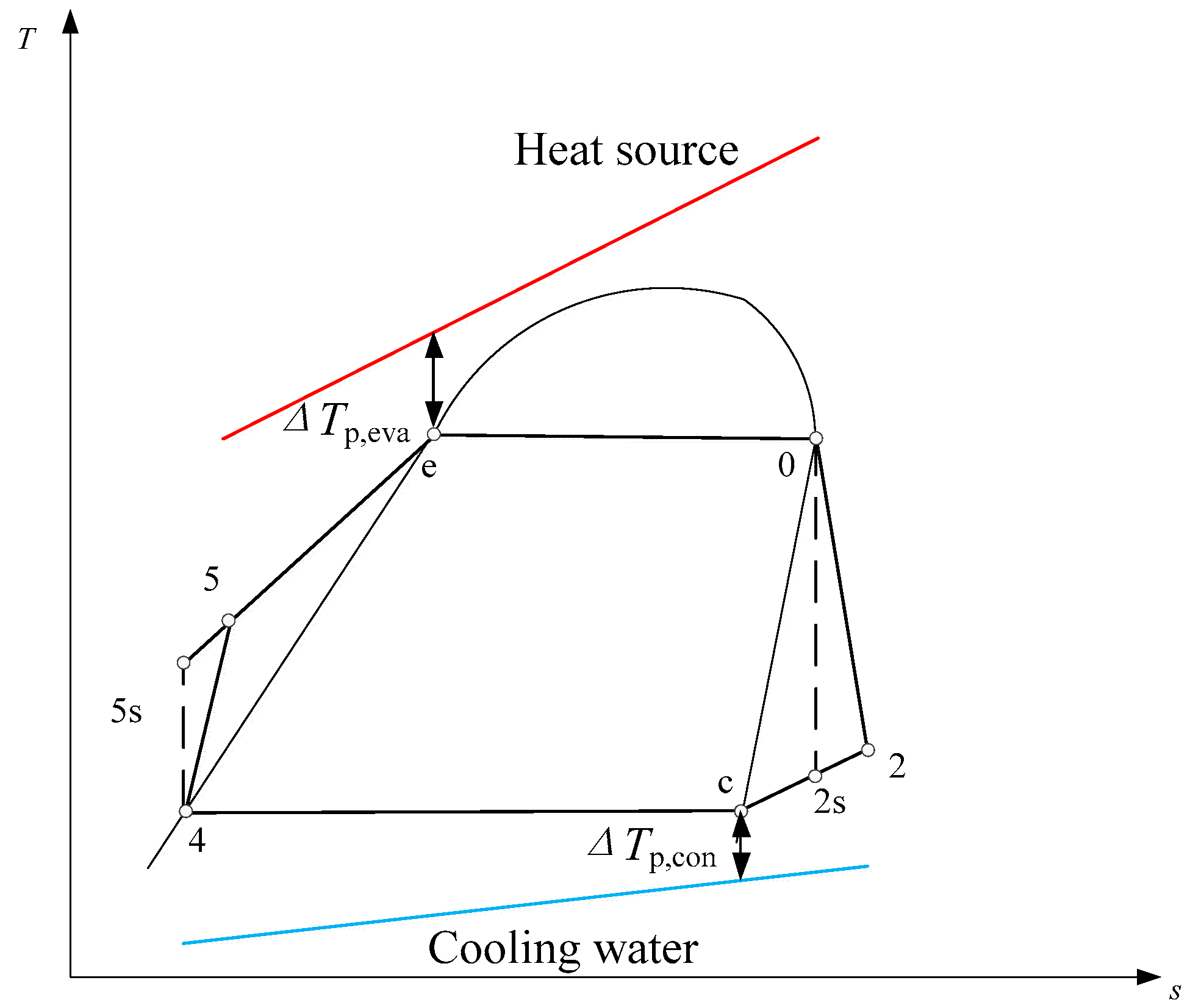
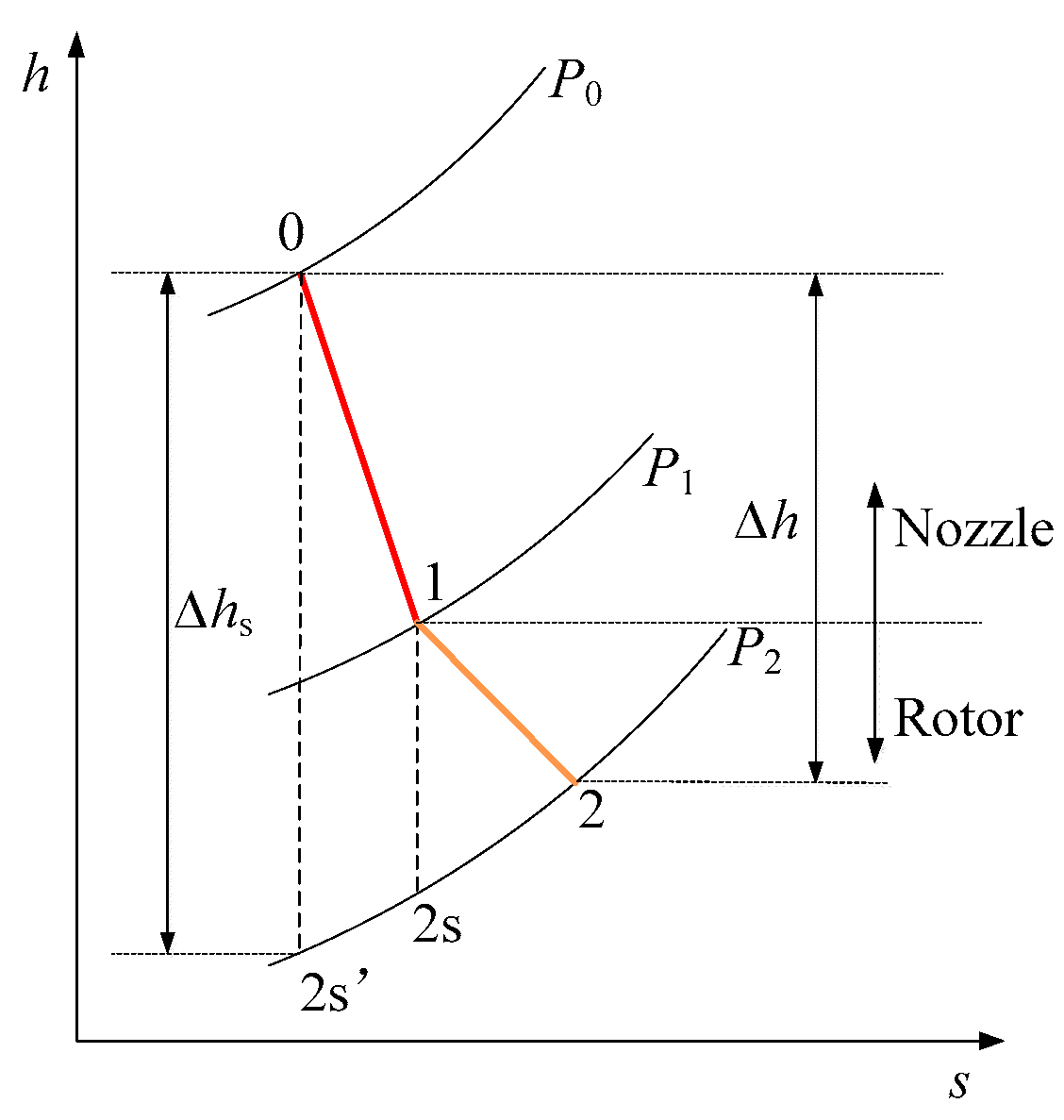
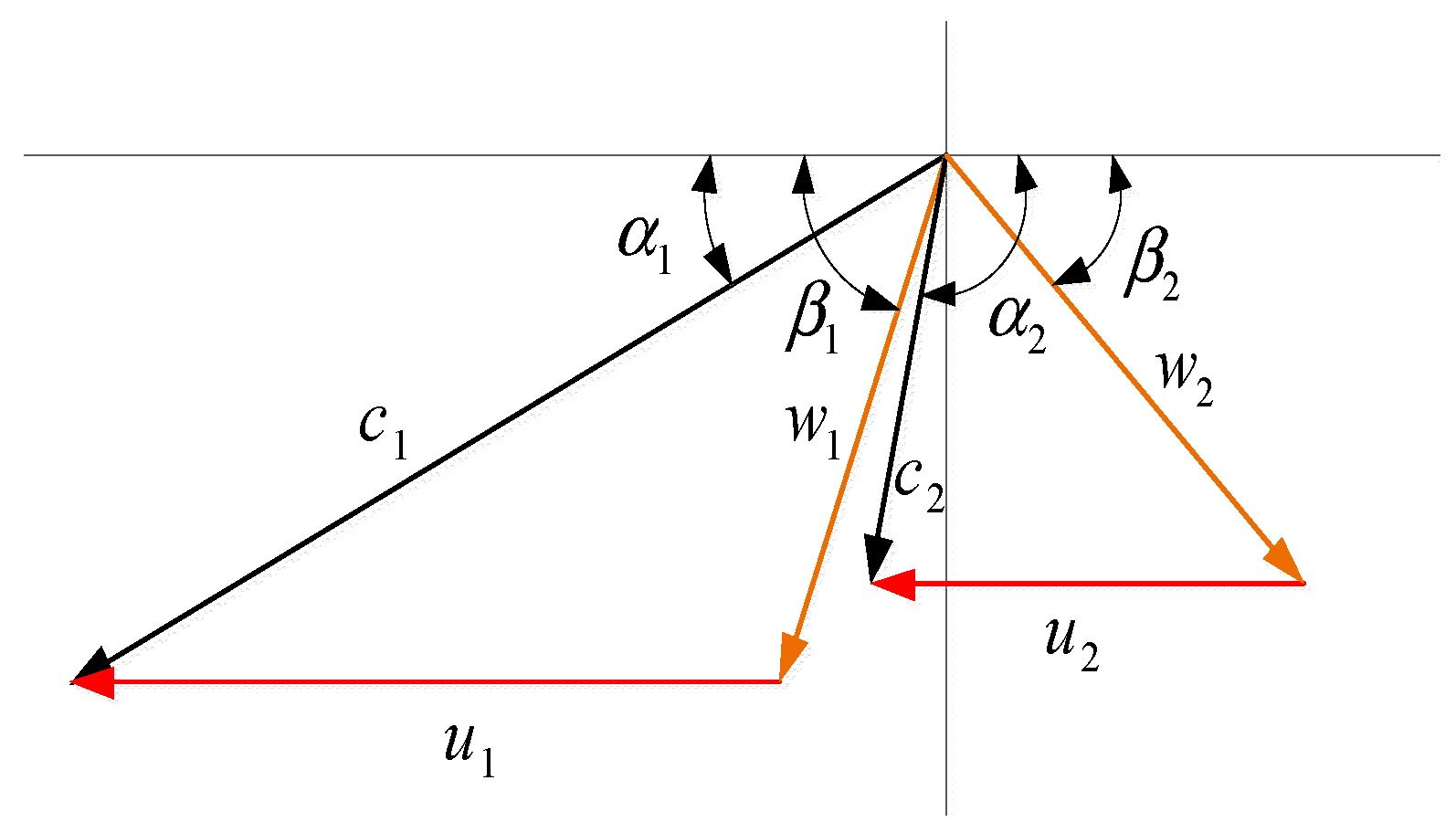

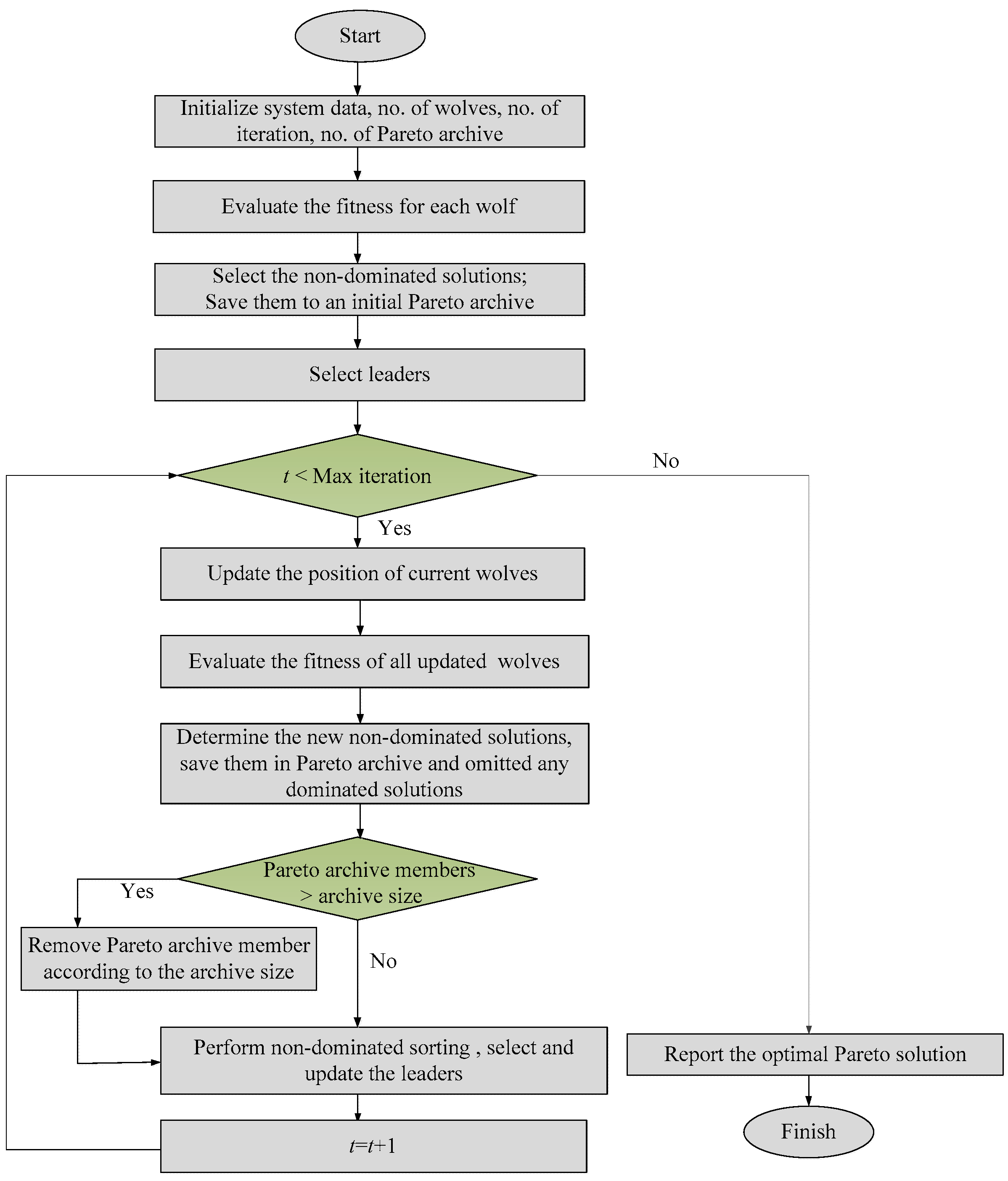
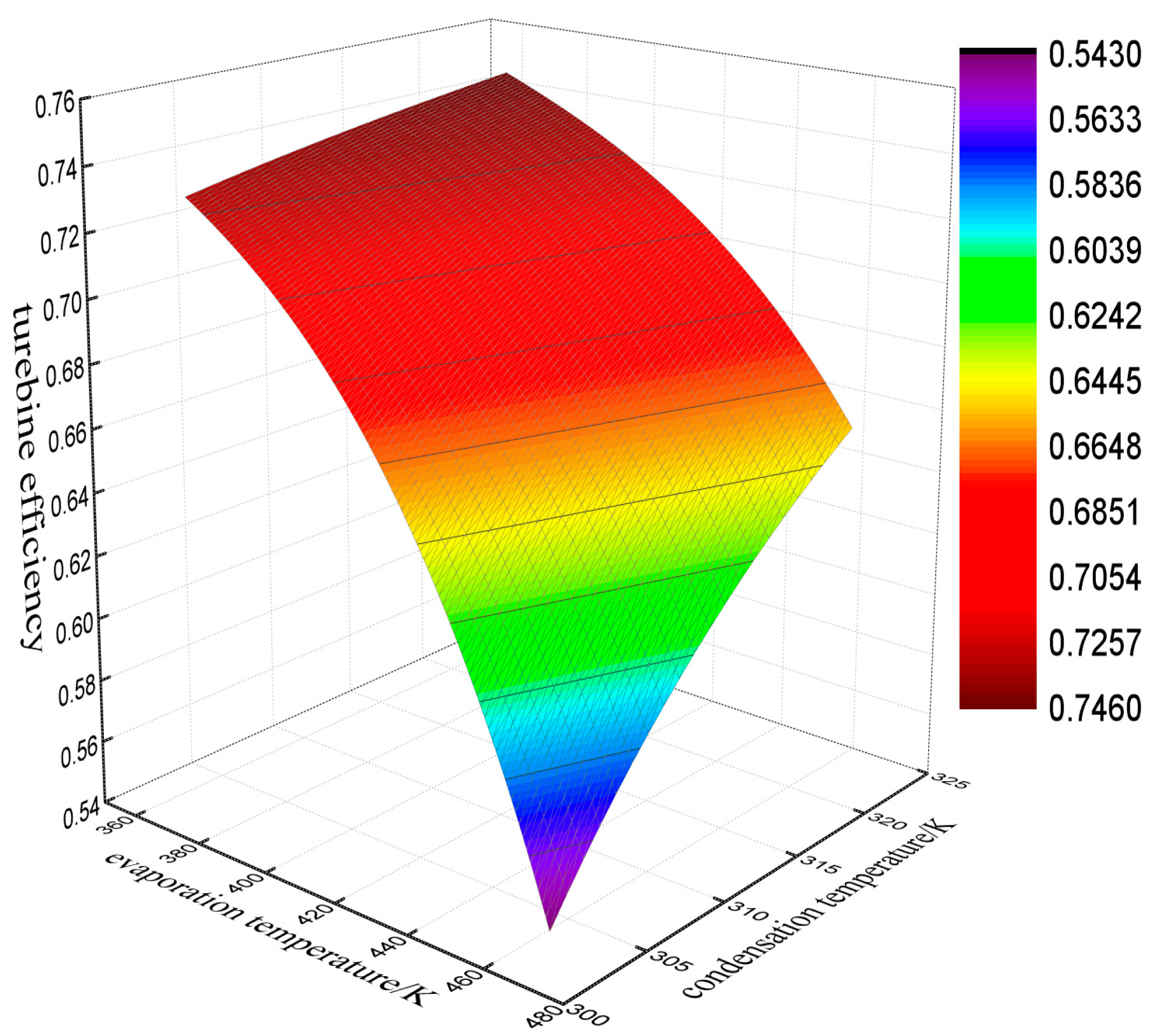
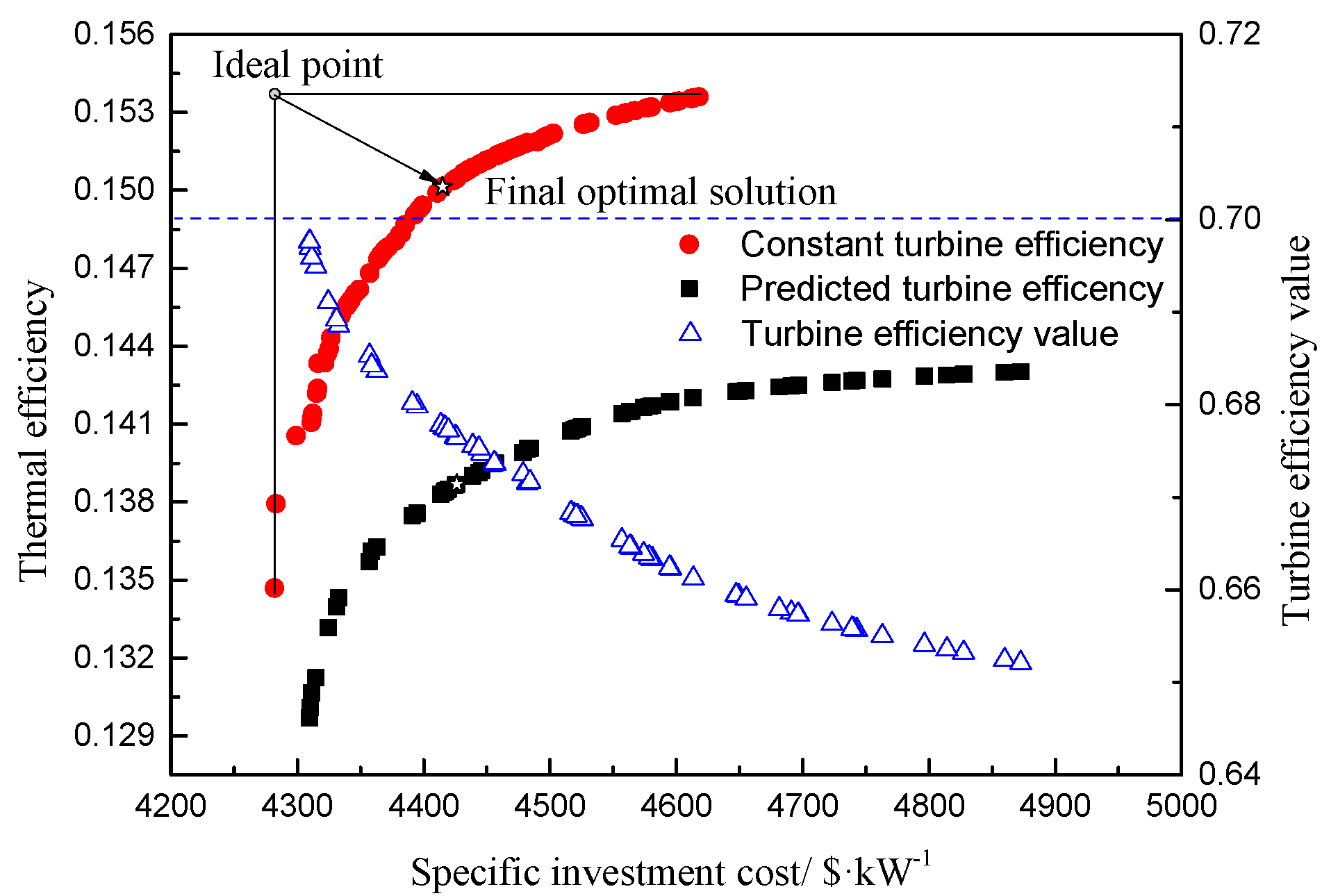

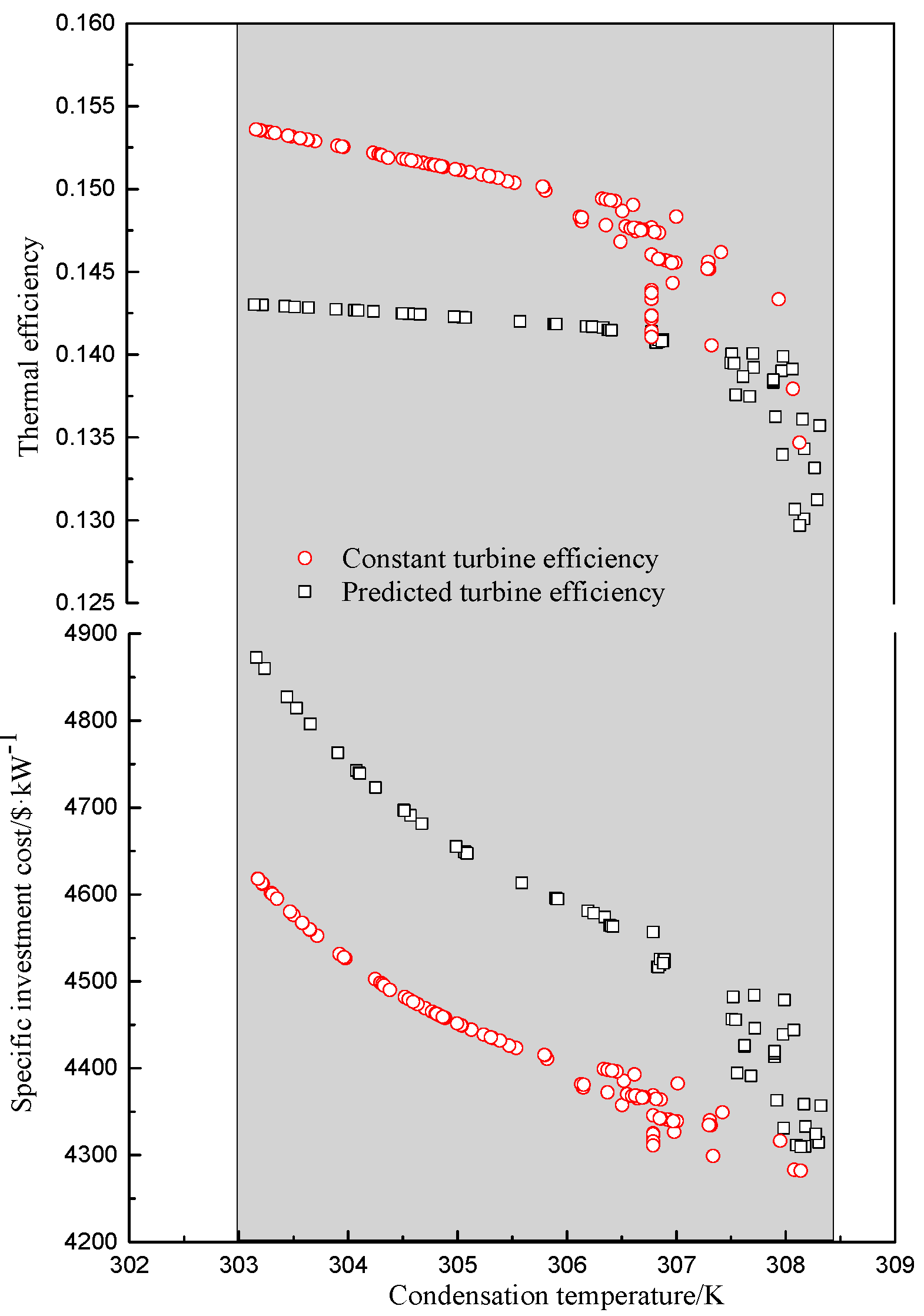
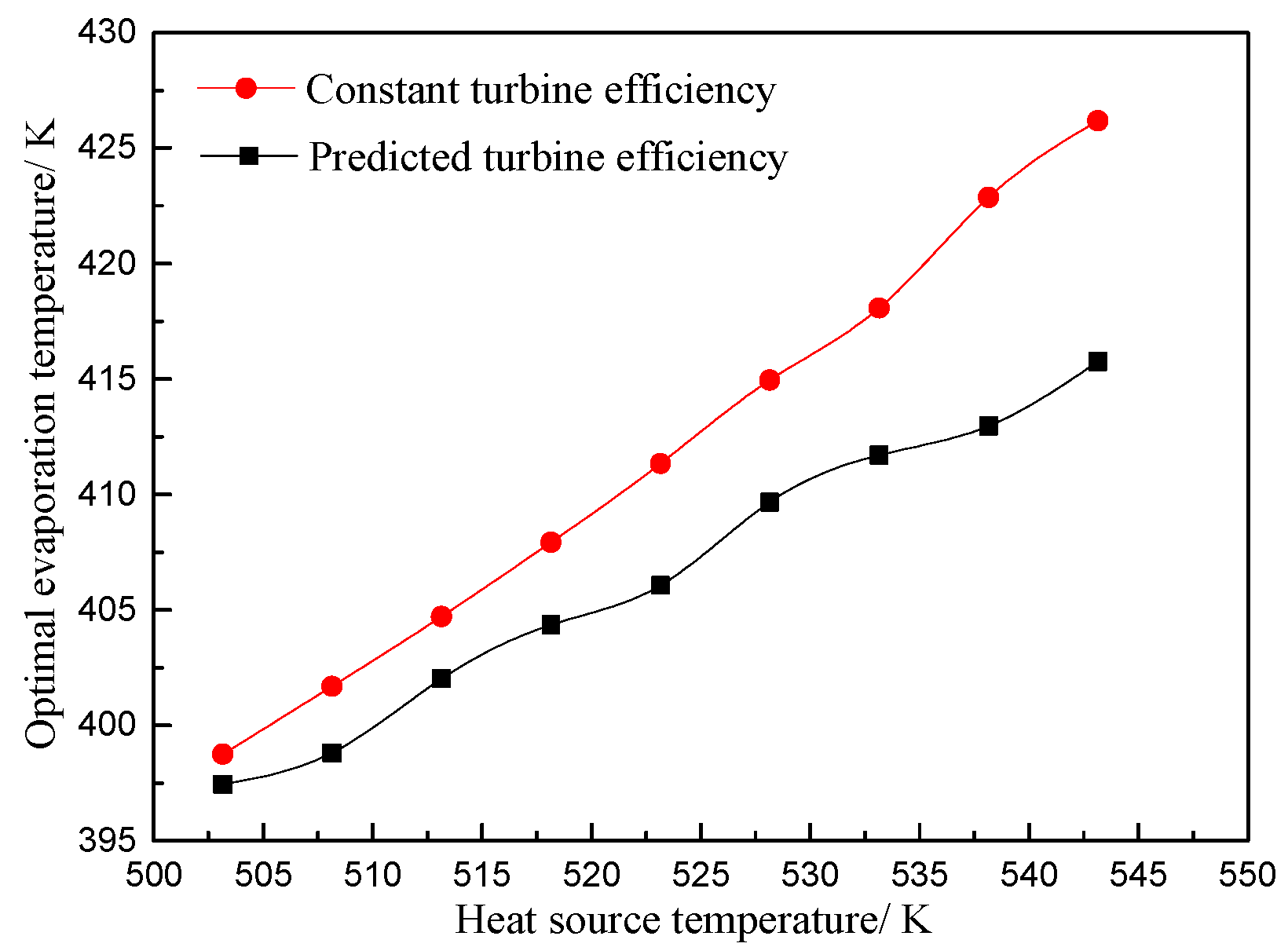
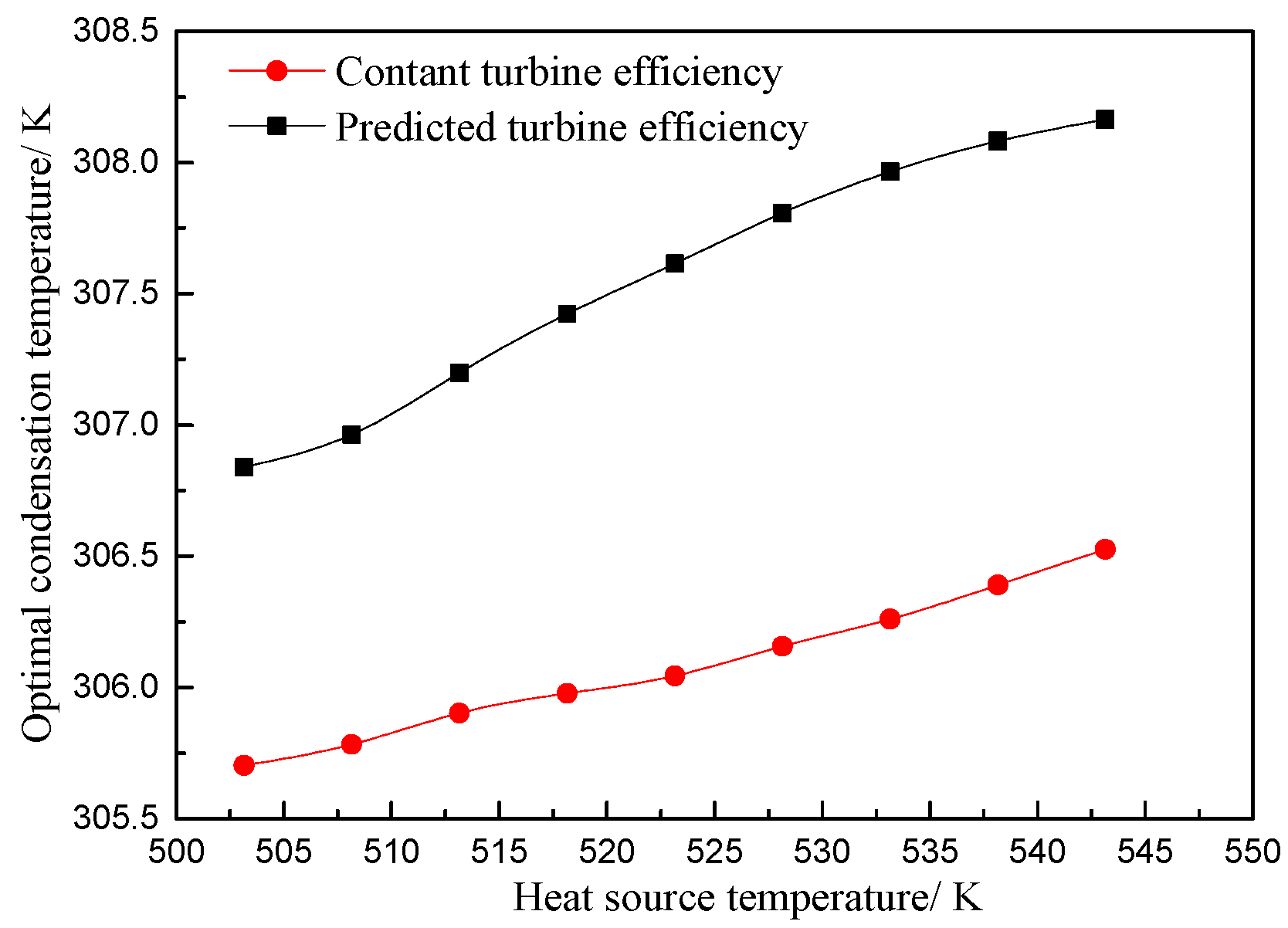
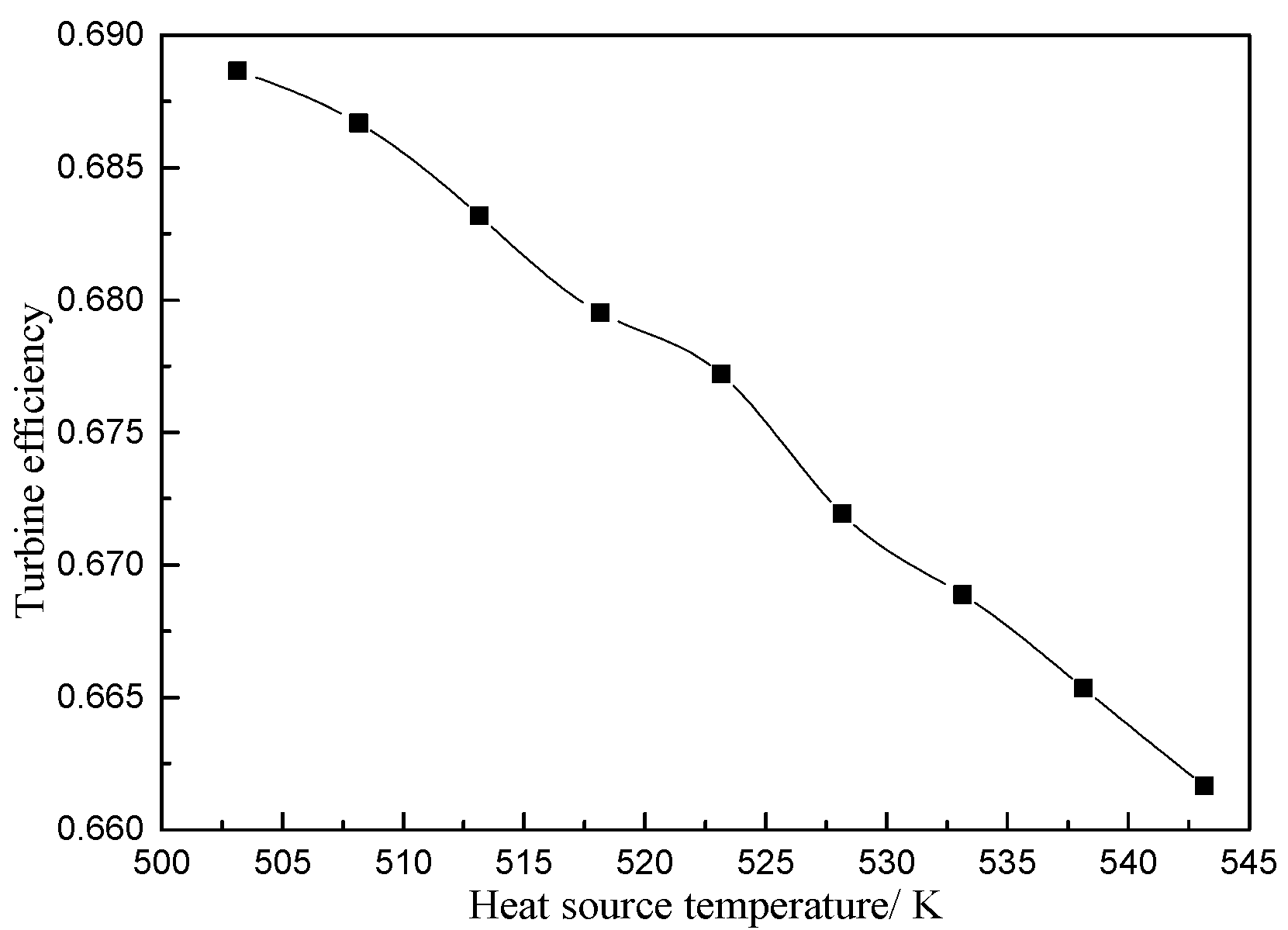
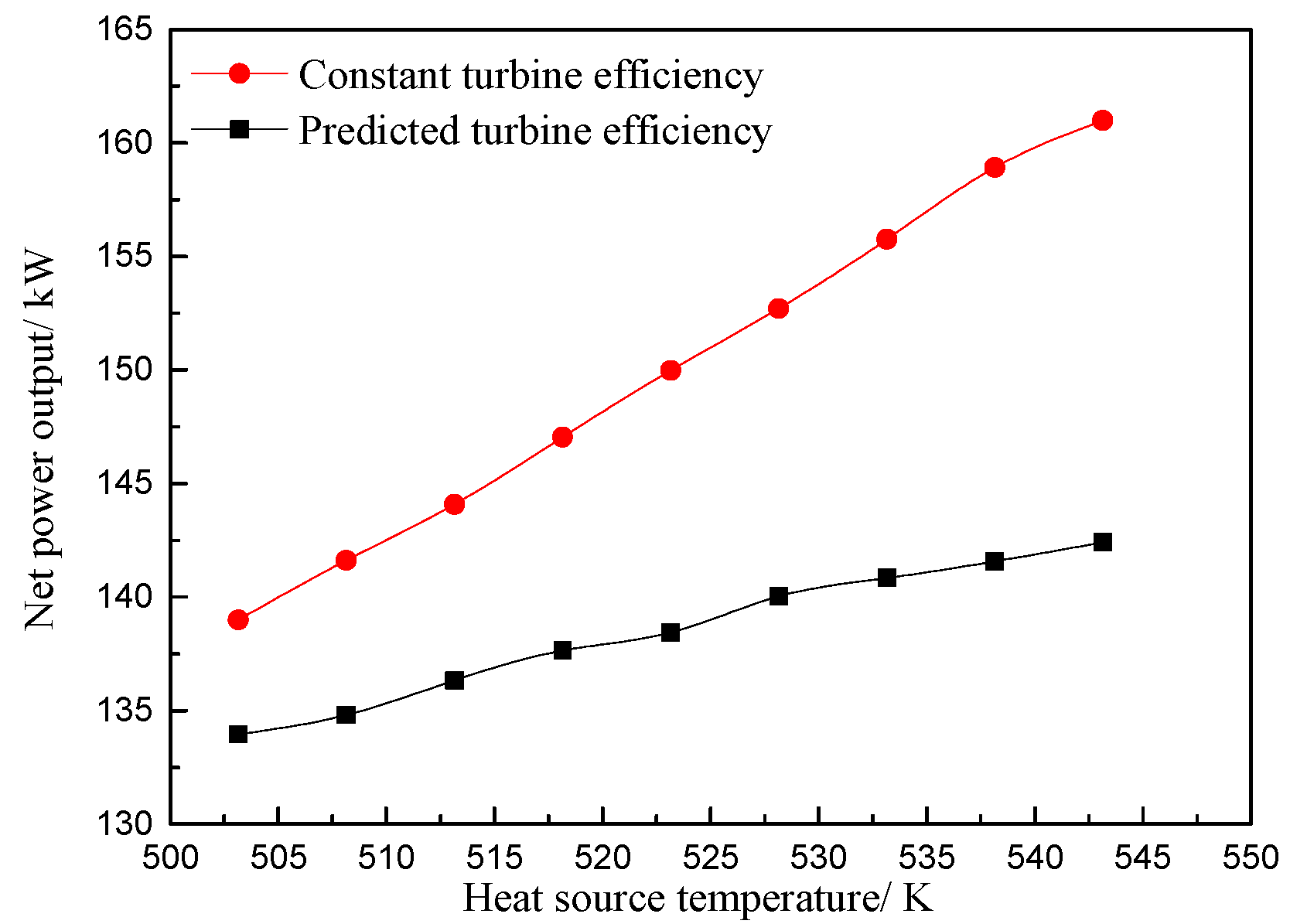
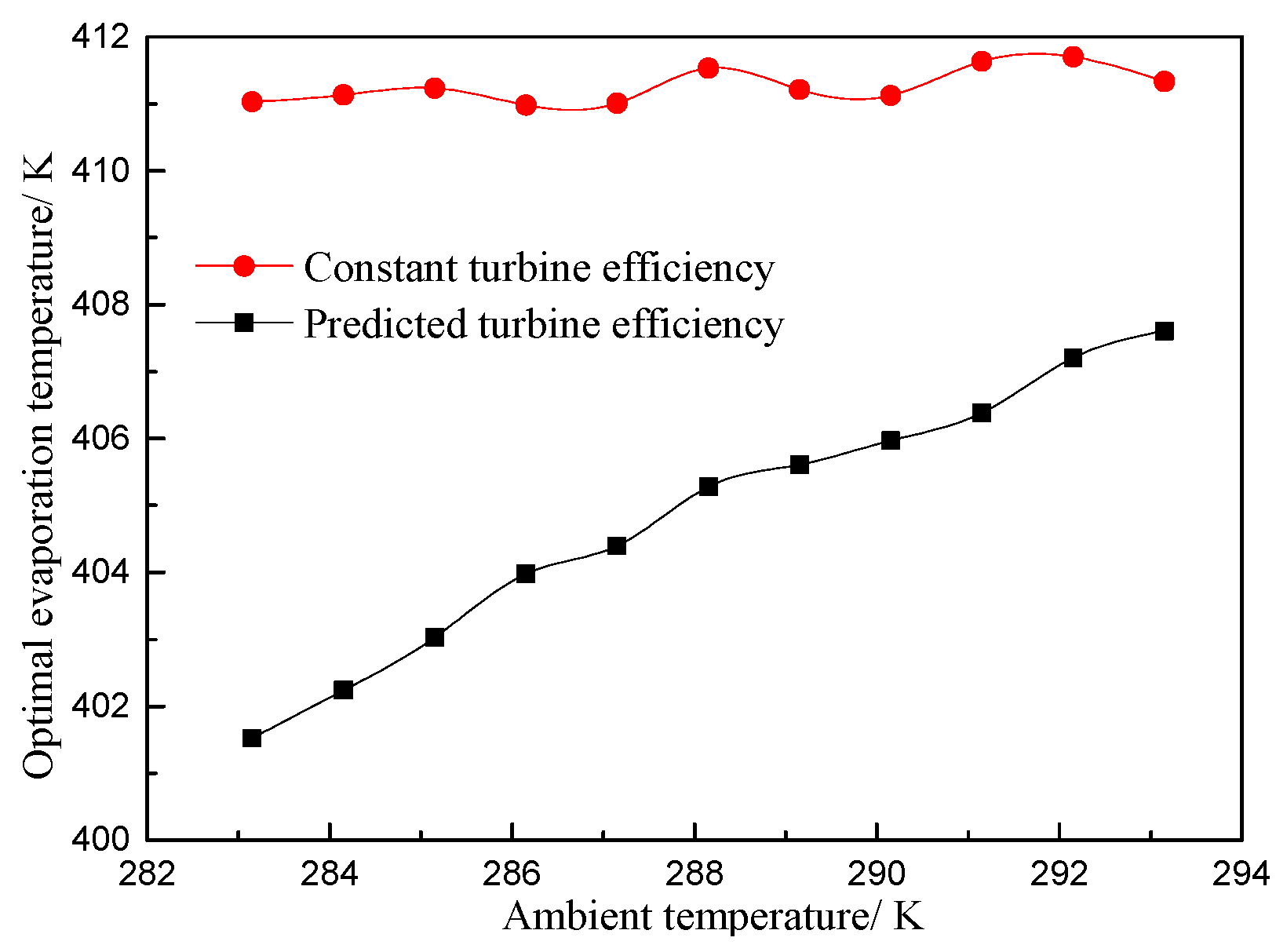
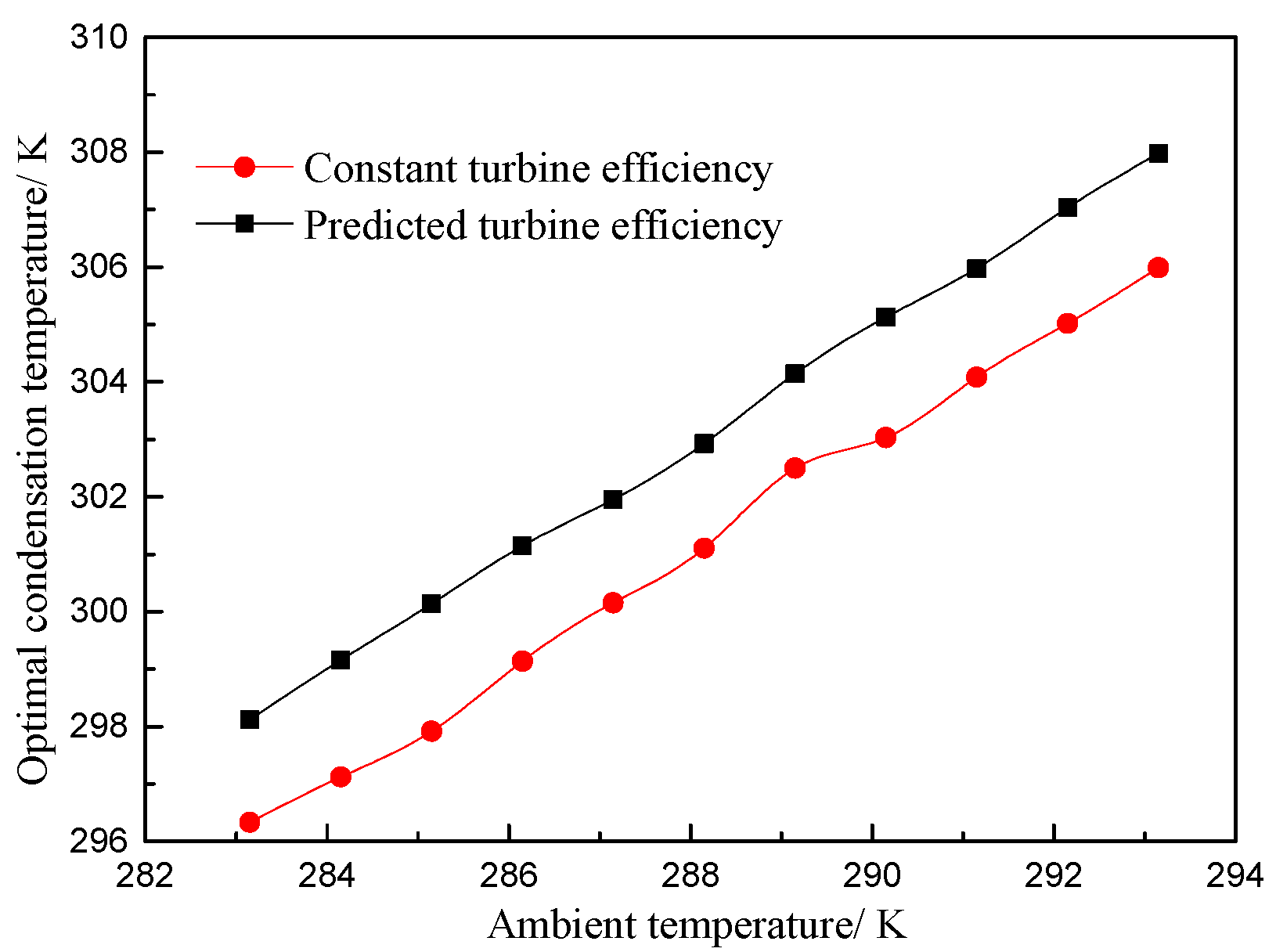
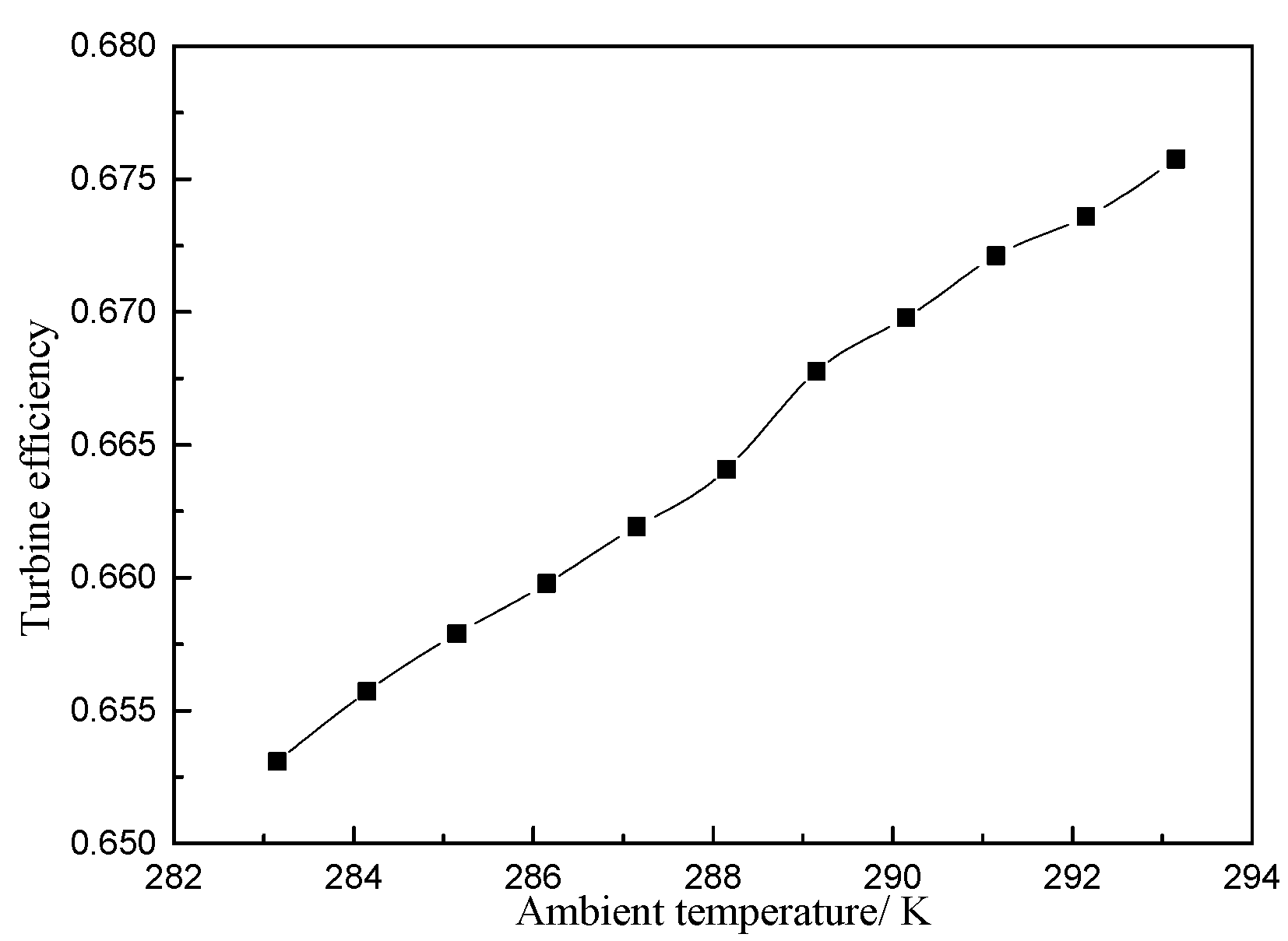
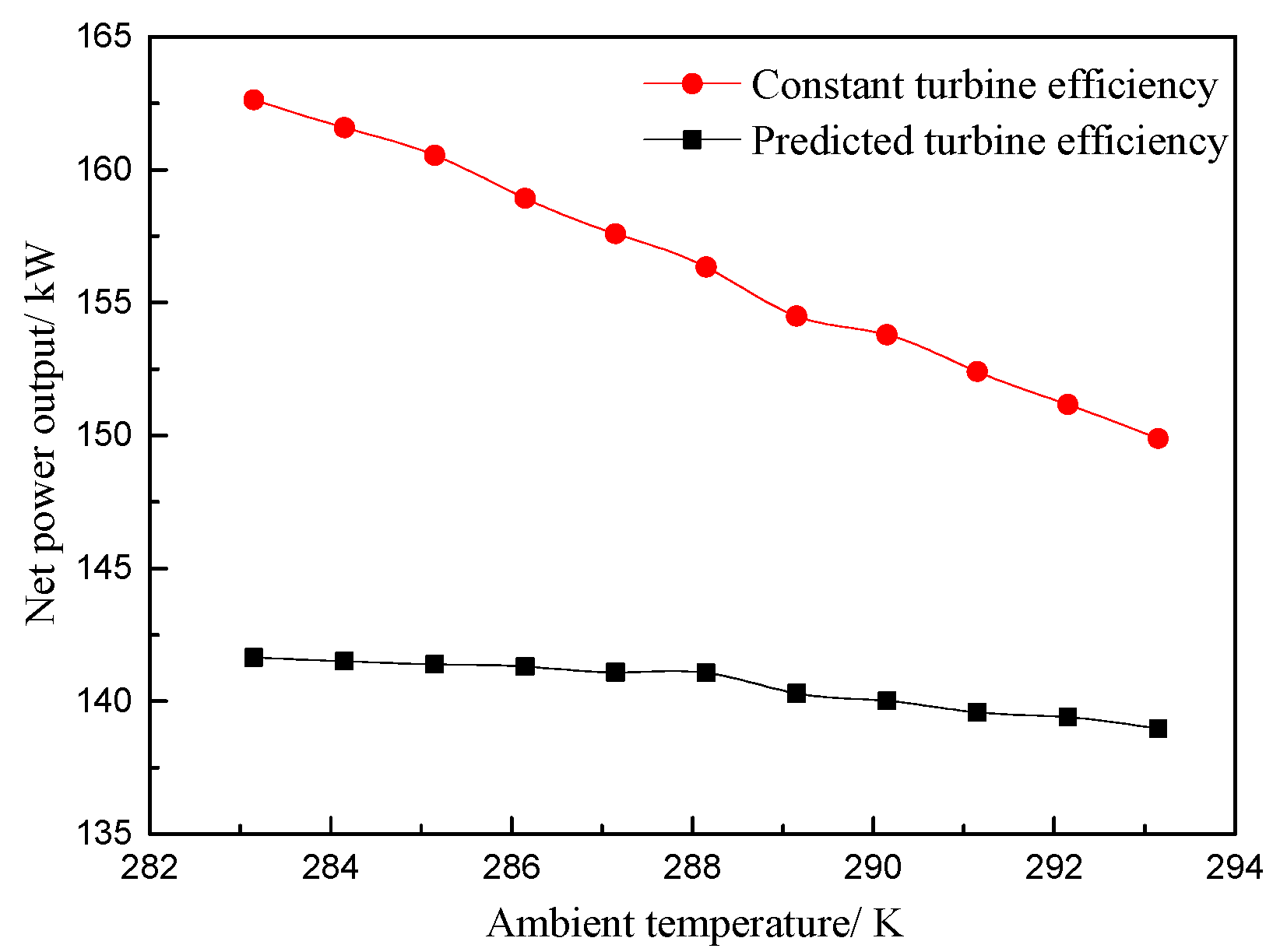
| Parameters | Constant Turbine Efficiency | Predicted Turbine Efficiency |
|---|---|---|
| Evaporation temperature/K | 411.33 | 406.06 |
| Condensation temperature/K | 306.04 | 307.62 |
| Thermal efficiency | 0.150 | 0.139 |
| Specific investment cost/$·kW−1 | 4415.14 | 4426.27 |
© 2018 by the authors. Licensee MDPI, Basel, Switzerland. This article is an open access article distributed under the terms and conditions of the Creative Commons Attribution (CC BY) license (http://creativecommons.org/licenses/by/4.0/).
Share and Cite
Li, P.; Han, Z.; Jia, X.; Mei, Z.; Han, X.; Wang, Z. An Improved Analysis Method for Organic Rankine Cycles Based on Radial-Inflow Turbine Efficiency Prediction. Appl. Sci. 2019, 9, 49. https://doi.org/10.3390/app9010049
Li P, Han Z, Jia X, Mei Z, Han X, Wang Z. An Improved Analysis Method for Organic Rankine Cycles Based on Radial-Inflow Turbine Efficiency Prediction. Applied Sciences. 2019; 9(1):49. https://doi.org/10.3390/app9010049
Chicago/Turabian StyleLi, Peng, Zhonghe Han, Xiaoqiang Jia, Zhongkai Mei, Xu Han, and Zhi Wang. 2019. "An Improved Analysis Method for Organic Rankine Cycles Based on Radial-Inflow Turbine Efficiency Prediction" Applied Sciences 9, no. 1: 49. https://doi.org/10.3390/app9010049





